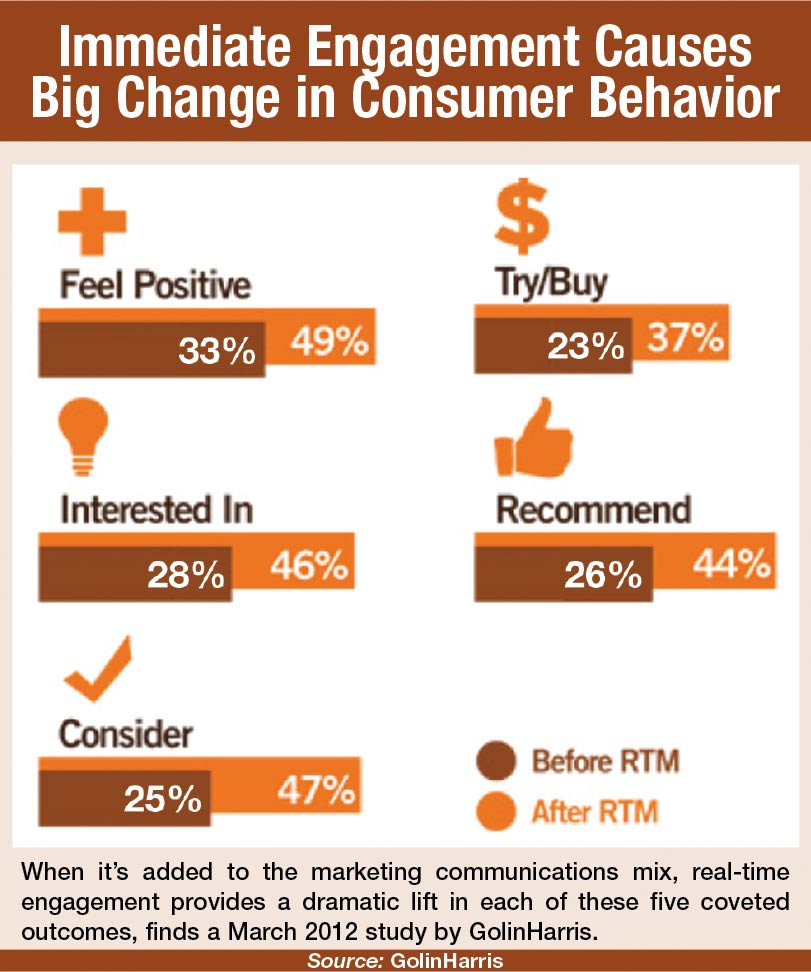 |
During the 2012 South by Southwest Interactive festival, GolinHarris unveiled the results of a new study on the impact of real-time marketing (RTM)—proactive, systematic, multichannel engagement based upon real-time insights—on consumers.
The topic is a hot one in communications—how organizations can better reach their targets in the moment and the media that matter most, in real time. The study findings are revealing:
• Exposure to RTM led to a significant uptick in desirable consumer behaviors versus no exposure to RTM. Regardless of product or category, marketers that engage in RTM can expect a 21% increase in positive brand perceptions; 19% increase in product interest; 26% increase in consideration; and 18% increase in likelihood to buy (see chart).
• RTM helps other traditional and online marketing investments work harder, amplifying each activity’s effectiveness. The research showed a significant lift in likelihood to seek out, pay attention to and participate in various brand communications delivered in common channels when RTM is added to the mix. For example, the likelihood for a consumer to follow, seek, pay attention to other media coverage and commentary about the brand increases 25% after RTM.
• In RTM, brand matters. Communication delivered through RTM activities is dramatically more impactful when a brand is clearly defined. When specific brands were introduced into the research, the impact of RTM on consumer behavior was even more potent, resulting in a 55% likelihood to consider a brand identified in the RTM communication, and a 45% likelihood to buy.
“No matter what type of brand or category in which you compete, the study shows that RTM helps reach customers at the right places at the right times,” says Jeff Beringer, executive director and global digital practice leader at GolinHarris.
REAL TIME THEIR WAY
RTM certainly helps McDonald’s. “[RTM] is how we’re connecting with consumers in social conversations,” says Rick Wion, director of social media at McDonald’s. “It’s not just through customer service issues on Twitter, but having a better understanding of customer conversations, and jumping into those strings as they are happening.”
Real-time campaigns are fairly simple, says Wion. For example, the McDonald’s Shamrock Shake promotion asks customers to take a picture of themselves with the shakes, in return for coupons and T-shirts. “I call this a virtual high-five,” says Wion.
“RTM should no longer be regarded as icing on the cake for modern marketing plans, but rather an integral ingredient for lean-forward communication with impact,” says Beringer.
Given the ubiquity of social media and its immediate interaction with customers, engagement in real-time engagement is here to stay. PRN
CONTACT:
Jeff Beringer, [email protected]; Rick Wion, @rdublife.
Follow Scott Van Camp: @svancamp01
